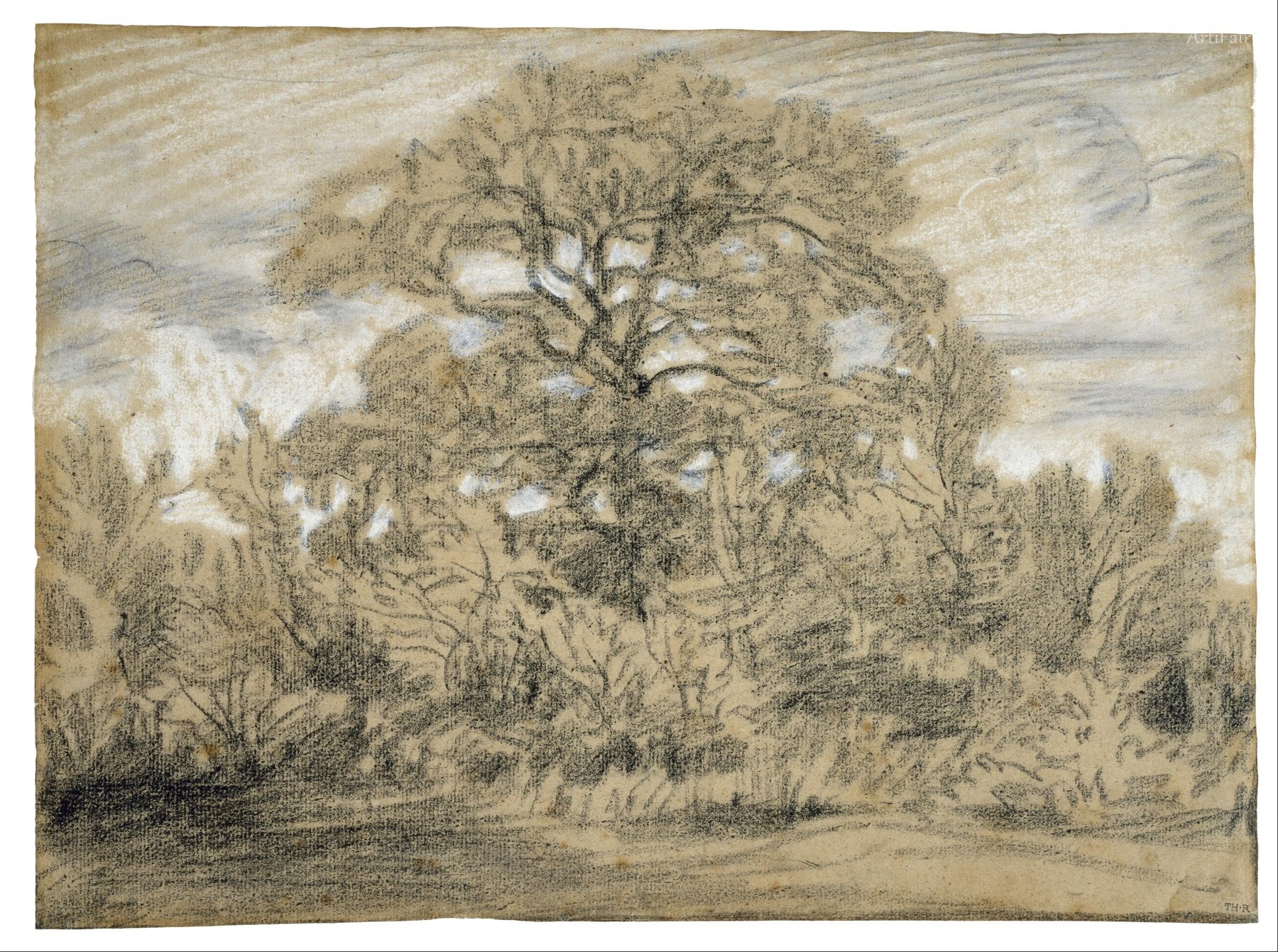
Art Appreciation
In this stunning study, one can feel the weight of nature as Théodore Rousseau masterfully captures the essence of an oak tree. The intricate network of limbs spreads wide across the canvas, illustrated with bold, sweeping strokes that evoke a sense of strength and resilience. Each line seems to pulse with the life force of the tree itself; it’s as if you can almost hear the rustling of leaves in a gentle breeze. The atmospheric sky lingers above—a soft palette of grays and muted blues that dances around the oak, enhancing its prominence. It’s this contrast between the soft backdrop and the robust figure of the tree that creates a visual dynamic, drawing the viewer’s eye right at the centerpiece of this composition.
Emotionally, the artwork resonates with a profound sense of tranquility and nostalgia. The oak tree stands as a silent witness to time, evoking feelings of stability and endurance. Rousseau’s technique, focusing on chiaroscuro, brings texture to the tree’s bark and the surrounding foliage—allowing shadows to mingle with light, imparting an almost ethereal quality to the scene. Historically, this piece belongs to a period where artists were embracing nature not just as a subject but as a character in their storytelling. Rousseau, a significant figure in the Barbizon School, invites us to rethink our relationship with the natural world, encouraging contemplation and respect for its beauty—reminding us, perhaps, of our own roots and the cycles of life that connect all living things.